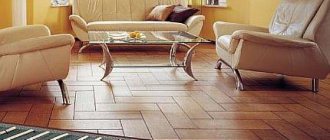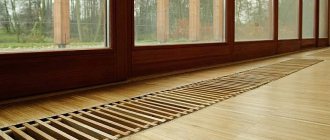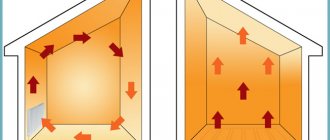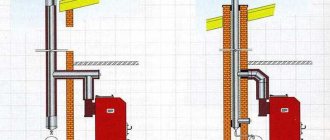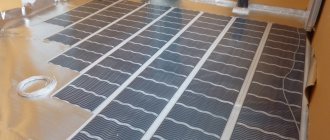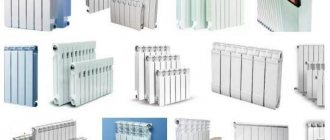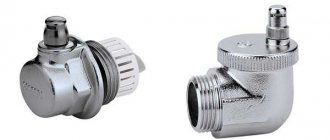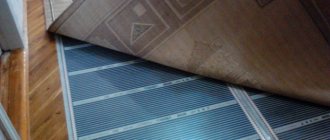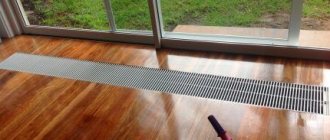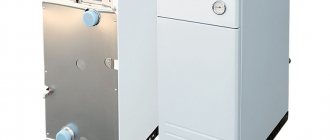When designing the interiors of modern apartments, houses and offices, designers often resort to non-standard solutions. Typical heating devices may not correspond to the general style of the room; instead, they are increasingly choosing to install inconspicuous heating radiators, which are appropriate in any interior and at the same time quite functional.
Batteries in the floor
Features of floor-mounted radiators
With the help of built-in heating devices, heating of country houses, offices, shopping centers and other objects is organized. Such radiators effectively cope with the task of heating places of permanent residence of people, workplaces, as well as rooms in which it is necessary to ensure a certain temperature regime (for example, for plants).
So in this case convection currents move
In-floor radiators operate on the convector principle. This method of heating the air helps maintain the desired temperature level and also significantly reduces heating costs. Savings occur due to more intense air circulation compared to conventional batteries that are mounted on the walls.
Underfloor heating radiators
heating radiators built into the floor
Calculation of the required number of sections
For calculations we will use the standard formula - Q=Sx100, where:
- Q – Heat transfer of the radiator, declared by the manufacturer.
- S – Room area.
- 100 is 100 watts, which is enough to heat 1 square. m of premises.
By calculating using the formula, you can determine the power of the radiator required for installation in one room. The calculation is correct if the structure is non-demountable.
For extended radiators, it is necessary to use a different calculation formula - N=Q/Qyc, where:
- N – Number of sections.
- Qyc – Specific thermal power.
- Q – Heat transfer of the radiator, declared by the manufacturer.
The formula is suitable for rooms with a standardized ceiling level of 2.7 meters. Higher ceilings in the apartment require an increase in the number of heating radiator sections.
In what rooms are floor-mounted radiators installed?
Some models have additional functions, such as condensate drainage, automatic regulation, and programmable climate control.
Trench convector
Such radiators are most in demand in rooms where it is necessary to create a special microclimate:
- in greenhouses;
- in museums;
- in galleries;
- in houses with panoramic windows.
Radius/angular in-floor convector
The versatility and multifunctionality of radiators built into the floor contribute to the fact that they are preferred when organizing heating in both residential and office premises, as well as in commercial premises.
Built-in convectors are sometimes installed in window sills
Installation
Calculation
So, we have made our choice. How to calculate bimetallic heating radiators according to the parameters of your apartment?
With standard (2.5 - 2.7 meters) ceiling heights, you can use the simplest calculation scheme:
- For 1 square meter of room, 100 watts of heat is taken;
- Depending on the climatic zone, a coefficient from 0.7 (Crimea) to 2.0 (Yakutia) is used;
Low winter temperatures increase the need for heat.
The heat output of the section is estimated on average at 180 watts.
So, for the Moscow region you can use a regional coefficient of 1.2; for a room with an area of 25 meters, 25 * 100 * 1.2 = 3000 watts of heat will be required, which corresponds to 3000/180 = 17 (rounded) sections.
Fastening
How to hang a bimetallic radiator on the wall?
- Standardly, pin brackets are used for fastening, which are screwed into plastic dowels;
- Instead, you can use pieces of smooth steel reinforcement with a diameter of 10-12 mm, driven into pre-drilled holes of a slightly smaller diameter.
Harness
What components for bimetallic radiators will be needed when installing them yourself?
- Set of radiator plugs (4 pieces, external thread DN25). The diameter of the internal thread of the passage plugs is determined by the number of sections of the device: if there are fewer than 10 of them, a liner with a nominal diameter of DN15 is sufficient, if more, it is better to take plugs with an internal thread of DN20;
- Throttle or thermal head and ball valve with American connectors for connecting to plugs. The throttle will allow you to regulate the heat transfer of the device manually, the thermal head – automatically, depending on the air temperature in the room;
- In the apartment at the top of the riser, the radiator will have to be equipped with a Mayevsky valve to bleed air.
Radiator connection kit.
What pipes should I use for connection? Preferably corrugated stainless steel.
What is this instruction related to?
They have high tensile strength;
- They bend with a minimum radius and do not require precise sizing;
- They are mounted with compression fittings using a pair of adjustable wrenches.
The radiator in the photo is connected with a corrugated stainless pipe.
Assembly Tips
Radiator plugs are sealed with paronite or silicone gaskets - the same ones that are used to build up a bimetallic radiator with additional sections.
Other connections are wound with Tangit Unilok sealant thread or flax with paint.
If the radiator is long (from 10 sections), use a diagonal connection rather than a lateral one. Then you won’t have to guess why bimetallic radiators do not heat along their entire length: with a side connection, the coolant will circulate only through the first sections from the supply line.
A diagonal connection will allow you to heat the maximum number of sections.
Advantages and disadvantages
The advantages of floor-mounted radiators include:
- Possibility of installation almost anywhere in the room;
- space saving: you can place a table or chair above the radiator;
- ease of care;
- invisibility: can be used in any style interior;
- no danger to children;
- protection against cold penetration into the room when installed near the door.
Trench convector Regulus Quattro Mini 15/35/110
Built-in batteries also have a number of minor disadvantages:
- difficulty in installation;
- the need to raise the floor level, which entails additional costs for building materials;
- high cost compared to wall-mounted batteries;
- reduced efficiency in rooms with ceilings higher than 3 m;
- spreading dust throughout the room.
Built-in convectors can be powered by electricity
Models with housing
These underfloor radiators are enclosed in a casing made of galvanized steel sheet. To reduce heat loss through metal walls, they are insulated. For the same reason, the battery case is painted dark. Such radiators are equipped with a heat exchanger with thin metal plates to increase the heat transfer area.
READ MORE: How to lay film heated floors under laminate
How to choose heating radiators
One of the leaders on the market - Rifar radiator
After installation, these heating devices are decorated with grilles. Most often they are made of wood or metal. They are painted in different colors, depending on the chosen design solution.
Floor-standing devices have a simpler design, but they do not always fit into the interior of the room.
The width of the niche ranges from 2 to 40 cm, length - from 50 cm to 4 m, depth - from 10 to 80 cm.
Floor radiators that are built into the floor are distinguished depending on the temperature of the coolant:
- high temperature. Characterized by parameters – 90/70°C;
- low temperature. The coolant temperature is 55/45°C.
Technical characteristics of copper-aluminum radiators Mars In this case, heating radiators are installed in a specially prepared niche.
Its walls are insulated. The most commonly used is polyester foam. Batteries of this type are mainly located in new buildings, where their installation is provided for in the design documentation. Diagram and principle of operation of a liquid electric radiator
The channel with heating elements is closed with a special grille. It must withstand significant loads that are possible during operation.
Also, the grill must be removable so that the channel can be cleaned of accumulated dust. It can move completely away or collapse.
Design of floor-mounted radiators
Built-in batteries have a very simple design. They consist of a metal body. It contains a heating element on which many convective fins are attached. The box is protected from above by a grille located at floor level.
Design of floor-mounted radiators
On a note! Some models are equipped with fans that can be turned off if necessary. This helps increase the air heating rate by up to 90%.
In order to reduce the noise level produced by fans, porous rubber inserts are included in the design of such radiators. Inside the box there are electronic regulators and sensors that are used to control the temperature and fan speed.
FanCOil trench convector with fiberglass body
Since the radiator installed in the floor is inconspicuous, the quality of the device is determined not by its appearance, but by the materials from which its parts are made. Particular attention should be paid to the metal that is used as the basis for the production of the battery. When installing a radiator in rooms with high humidity, preference should be given to devices made of stainless steel. In places with normal humidity levels, it is quite acceptable to use a battery made of galvanized steel. The parts of the device are usually coated with powder paint, which protects them from corrosion.
Radiator built into the floor (in-floor)
The only part of the radiator that is visible after installing the device is the grille, which can be made of the following materials:
- tree;
- ordinary, stainless or galvanized steel;
- aluminum;
- marble.
Convector Carrera with decorative frame
Grids are also divided into two types:
- rolls that can be rolled up;
- linear , which rise only entirely.
Roll-up grilles are available only with cross bars. And in linear gratings, the slats can be located both lengthwise and crosswise. If it is expected that the radiator will be stepped on, then there should be no plastic elements in the grille design.
Convector with stainless steel grate
Heaters in built-in radiators come in two types.
- Electrical . They are equipped with closed-type heating elements on which plates are installed. These plates are made of aluminum, copper or steel. They serve to increase the surface in contact with air. A high-quality heating element can be made of stainless steel, which increases its service life. Radiators are manufactured taking into account all safety requirements for electrical devices and are equipped with fuses to protect against failures.
- Mermen . They have heaters in the form of a metal tube with plates. Using pipes they are connected to the central heating system. Can be made of aluminum, copper, stainless or galvanized steel. Despite their efficiency, the operation of batteries with copper heating elements in conditions of centralized heating of apartment buildings is difficult. They should be given preference for organizing individual heating.
Water in-floor heating convectors
Since water heating is the most common in our country, when choosing built-in batteries, preference is given to models with water heating elements. Electric radiators are more often used where there is no possibility of connecting to centralized heating.
Floor convector water heating
Bimetallic devices for panoramic windows
This type of radiator belongs to heat supply equipment, the high cost of which best corresponds to the quality.
Bimetallic radiators differ:
- High working pressure.
- Compatible with other metals. In them, aluminum is used only for the manufacture of the shell, which increases the aesthetics of appearance and heat transfer. As for the internal casing, equipped with outlets for connection to the system, it is made of stainless steel or black steel.
According to experts, bimetallic radiators are the best option for systems connected to a centralized heating supply. Their use for supplying heat to private households is unjustified in terms of safety margins and monetary costs.
The height of bimetallic radiators for panoramic windows ranges from 24.5 to 45 centimeters.
Types of floor-mounted batteries
A fan may be included in the design of an electric or water radiator. In this case, the heat transfer from the heating device increases significantly. For the fan to operate, the device must be connected to a power source. Vibration-proof supports are used to reduce noise. Such radiator models cope faster with heating the entire space of the room and prevent the formation of condensation on the windows.
To increase power, tangential fans are installed
On a note! Some models can work both as heating devices and for air cooling. Some of them are even capable of providing the room with fresh air, which is especially in demand in buildings equipped with double-glazed windows. Before entering the room, the air from the street is filtered and heated.
If you need to install built-in radiators in a room of non-standard geometry, you can make them to order. Such devices may, for example, have a curvature of a given radius. To make cleaning inside the batteries easier, they can be equipped with heaters that can be rotated or removed altogether.
Designer radiator
For rooms with high humidity, special models of built-in radiators are manufactured. Their parts are made of stainless materials, and electrical equipment has an increased degree of protection. Condensate is discharged through a drainage drain.
Electronic regulators in a number of models of built-in batteries are used to control temperature conditions. For convenience, the kit may include a remote control. Using such devices, the indoor climate can be controlled programmatically, setting the mode for several days in advance.
In-floor convector in the gym
How to recess heating pipes into the wall
Many people believe that recessing pipes into the wall is too dangerous. But if everything is done correctly, problems can be avoided.
Use only high-quality and durable materials, and do not trust installation to just anyone. If the main is located inside a wall, it is not so easy to get to.
All materials tend to expand and contract with temperature fluctuations. Therefore, heating pipes cannot be cemented or covered with plaster - they will quickly wear out, and joints and connections will break.
Pipes must be covered with high-quality thermal insulation to avoid heat loss. It is preferable to use materials with a top heat-reflecting screen made of metal foil.
It is best to cover the gate with plasterboard so that, if necessary, you can easily reach the highway.
Selecting a built-in radiator
Choosing an in-floor electric radiator is easy. It is enough to determine the required size and power of the device, and also decide whether a built-in fan is needed.
How to choose an underfloor heating convector
When choosing a battery with a water heater, you should also take into account the dimensions of the device, the convection method and the following points:
- water pressure in the centralized heating system, the level of which can be found out from the management company;
- parameters of the heating element , which in each specific case must correspond to the temperature and composition of the water in the pipes of the heating system;
- type of heating system , which can be either two-pipe or single-pipe, what you need to pay attention to;
- connection diameters (not particularly critical, since you can use adapters);
- humidity in the room , which imposes requirements on the materials used in the production of the radiator.
How to choose the right floor convector
Coolant circulation control
The underfloor heating coolant circulates through a pipe system along a closed route. The manifold heated floor cabinet provides water circulation, as well as control of the heating circuits.
The appearance of the collector (distribution) cabinet resembles a box. A manifold cabinet is assembled from three groups of elements:
- Pump group;
- Collector Group;
- Temperature control groups.
The basic group of the manifold cabinet is the manifold group, which consists of:
- Ball valve
- Flow meter
- Air vent
- Brackets
- Thermometer
- Frame
- Adjustment head
- Drain tap
Note: Assembly of manifold cabinets may vary. The photo shows examples of ready-made kits.
Is it worth installing built-in batteries instead of a “warm floor” system?
Both options for heating a room have their advantages and can be used in a particular room, depending on its purpose. It is preferable to install “warm floors” in residential premises, and built-in radiators are more appropriate in areas with high traffic.
The use of “warm floors” is not allowed with floor coverings such as linoleum and parquet. In this sense, built-in batteries are more versatile, as they can be installed with any floor covering.
Electric convector power calculation table
Advantages
The main advantage of floor batteries is minimal heat loss. This is achieved due to the well-thought-out design and shape of the devices.
Here are other advantages:
- They have a small height and dimensions, do not cover large windows, do not interfere with the view and do not crowd the room;
- A considerable range of equipment with different thermal power;
- Simplicity and ease of installation;
- They have an attractive, modern look;
- Heating temperature is adjustable;
- Affordable price.
Why does the floor-standing type of battery, despite its small size, have excellent thermal power? The thing is that they come in low but wide products. Heat transfer is high. Some models are in no way inferior to wall-mounted, standard types of batteries.
Installation features
Installing recessed batteries into the floor does not require special preparation. In order to do this yourself, you need to thoroughly study the design of heating equipment in the house.
Trench convector POLVAX
To extend the service life of devices, ensure efficient heating of the room and not waste a lot of money and effort, when installing radiators you should pay attention to the following nuances.
- Central heating system pressure. Since in-floor radiators are primarily intended for heating country houses, they are generally not designed to withstand the pressures inherent in central heating systems. If you nevertheless decide to install a built-in radiator in an apartment in a multi-storey building, then when choosing a model you should rely, first of all, on this indicator.
Installation of an in-floor convector
- Indoor ceiling height . The larger the volume of the room that needs to be heated, the greater the power of the built-in radiators should be. The calculation is carried out using the formula 1 kW per 10 sq. m.
- Electrical supply to water-type heating radiators . This point should be considered at the building design stage or before the renovation of the premises begins. Otherwise, you can only install a radiator with an electric heater.
- Floor space required to install radiators . In this case, they rely on the dimensions of the devices. There should be a space between the floor and the radiator, the height of which varies depending on the model of the device.
Installation of an in-floor convector
Table. Step-by-step instructions for installing a floor-mounted radiator with a water heater.
| Steps, photo | Description of actions |
Step 1 | Together with the “warm floor” system, you can install in-floor convectors for additional heating of stained glass windows facing the north or north-west side of the house. They will also serve as heaters in the off-season, when you need to provide the house with a small amount of heat without using the entire heating system. Thus, cost savings are achieved. |
Step 2 | In terms of dimensions, the radiator model is selected depending on the height of the “warm floor” system. Preference should be given to models with a built-in fan, which will blow the glass of the stained glass window and effectively combat condensation. |
Step 3 | Central heating pipes are installed and insulated. For radiators with a fan, you will need to install an electrical cable and install a thermostat to monitor the temperature. |
Step 4 | In-floor convectors are connected to the centralized system by connecting to radiator pipes, located, as a rule, on the side in a compartment hidden under a decorative cover. |
Step 5 | The distance from the stained glass window to the battery must be at least 50 mm. If you build a convector into the opening of a stained glass window, then its area is significantly reduced and, accordingly, its efficiency decreases. But at the same time, the device does not take up extra space and will not be interfered with by curtains when blowing on stained glass windows. |
| Step 6 | The device comes with instructions, after studying which you can easily connect the radiator according to all the rules and ensure its effective service for many years. |
In-floor convector for panoramic windows
An in-floor convector is a heating radiator that is mounted directly into the floor under a panoramic window. From a design point of view, this option undoubtedly outperforms the previous one. The convector is almost invisible.
But even here there are some drawbacks. In-floor convectors are noisy (due to the fans built into them), dust accumulates in them, they can break down, requiring expensive repairs, and furniture should not be placed near them.
And the biggest difficulty is installation. Installing an in-floor convector is quite difficult - you will have to chisel the floor or raise its level, which is often impossible to do in an apartment.
Variations
Currently, two types of similar batteries can be found in hardware stores:
Case convectors are distinguished by the fact that the heating element is installed in a special metal casing. Its walls are made of materials, mainly aluminum, that retain the generated heat and transfer it to the room.
From above, the entire structure is covered with gratings, of which there are also 2 types: wooden and metal. When choosing it, it is worth pushing away from the floor covering so that the grating matches it and a complete picture is formed.
The second type is frameless radiators. When installing them, a rectangular recess is created in the floor, thermally insulated and covered with non-flammable material.
The grate, as in the first option, must be selected with the expectation that it will withstand the weight of people passing through it.
Also, do not forget that the part of the battery under the grill requires timely cleaning and close care. For this reason, it must be accessible for quick removal and cleaning.
Photos of the built-in heating radiators mentioned above can be found on the Internet. There you can choose the option that suits your space, and also get acquainted with the price of these models.
Why the fastening must be reliable
The tranquility and well-being of not only the inhabitants of the home, but often also the neighbors, will depend on how correctly the mounting technology for heating radiators is applied and the installation is carried out.
Causes of problems that arise due to insufficiently reliable fastening:
- distortions of radiators when filling the system with water;
- accidental mechanical damage during operation;
- natural shrinkage of house structures (especially wooden ones);
- influence of natural factors (earthquakes, landslides).
As a result, if heating radiators, pipes and other elements of the heating system are not properly secured, they may become deformed, connections may become depressurized, and subsequently leaks will appear.
Let's look in more detail at how to mount heating radiators to the wall and floor, as well as mount heating pipes to the wall.
